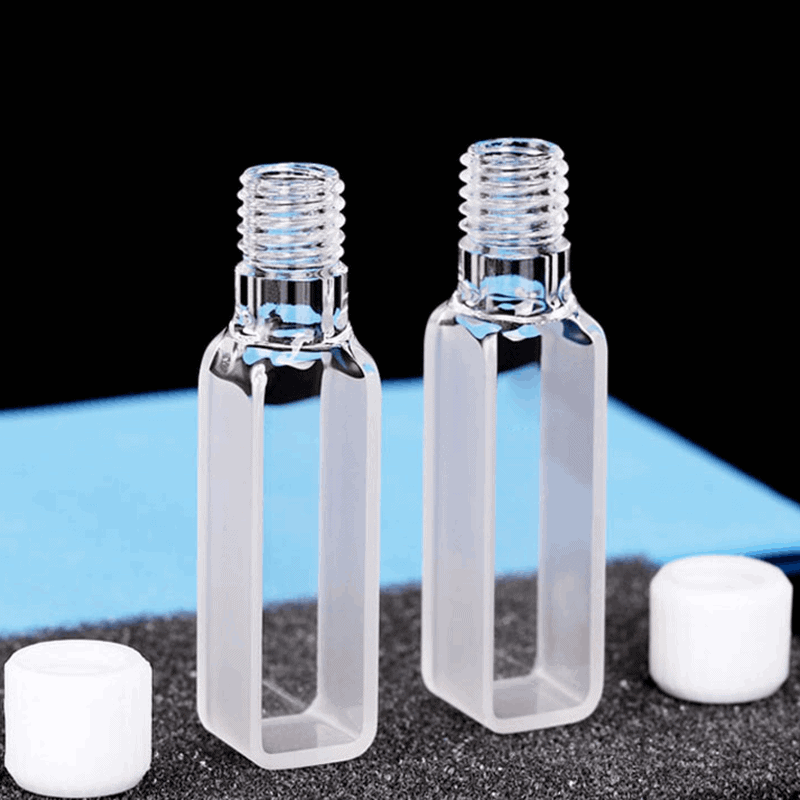The Role of Cuvette Size in Ensuring Accurate Medical Analysis
The Role of Cuvette Size in Ensuring Accurate Medical Analysis
Blog Article

The Great things about Cuvettes and Quartz Vials in Clinical Research
In clinical research, the reliability and reliability of dimensions are paramount, particularly in fields like spectroscopy, chemical evaluation, and biology. One important ingredient that assures accuracy in these reports may be the cuvette, specially cuvet. Understanding the advantages of cuvettes and the benefits of using quartz vials may significantly affect the results of tests and laboratory work.
Detail in Spectroscopy
Cuvettes are essential for keeping fluid products in a variety of logical tools, such as spectrophotometers. These units assess the absorbance or indication of light through a sample, and the cuvette serves whilst the container for the sample all through analysis. The size and substance of the cuvette perform a crucial position in ensuring the reliability of the measurements. Quartz vials, exclusively, present excellent optical clarity, allowing for correct mild sign across a wide variety of wavelengths, including ultraviolet (UV) light. This makes quartz vials a great selection for spectroscopic tests, where precision is critical.
Longevity and Compound Resistance
Quartz vials be noticeable because of their longevity and weight to severe chemicals. Unlike plastic cuvettes, quartz vials are less inclined to degrade or respond with compounds in the trial, ensuring that the outcomes of the experiment stay unaffected by possible contamination. That quality makes quartz vials particularly useful in environments wherever hostile solvents or high temperatures are involved. Their power to resist extreme problems without reducing the reliability of the trial is one of the primary causes they are favored in many laboratory applications.
Accuracy in Size and Form
How big a cuvette is not really a one-size-fits-all situation. The aspect of the cuvette, such as for instance its journey length, influences the amount of the test and the amount of mild that passes through. Selecting the correct cuvette measurement for the particular try guarantees that the results are not skewed due to below or over-concentration of the sample. Quartz vials can be found in many different shapes and patterns, allowing analysts to pick the most appropriate option on the basis of the requirements of their experiment. This freedom contributes to more correct data and allows for greater get a handle on over fresh conditions.
Openness and Gentle Sign
Quartz is known for its excellent visibility, specially in the uv (UV) and obvious mild spectra. This makes quartz vials perfect for use within devices that need apparent visual paths, such as UV-Vis spectrophotometers. The superior gentle transmission houses of quartz ensure that the light moves through the taste with little dropping or consumption, resulting in more accurate readings. For experiments that demand high detail, quartz vials give a distinct gain around other materials.
Long-Term Consistency
When employed in study laboratories, it is a must to possess trusted tools that maintain their strength around time. Quartz vials aren't just chemically tolerant but also extremely sturdy, indicating they're less likely to experience wear and tear. That long-term reliability ensures that experts can use quartz vials for extended times without fretting about destruction or the need for frequent substitutes, contributing to cost-effectiveness in the extended run.
In conclusion, both cuvettes and quartz vials provide a selection of advantages that enhance the quality and precision of lab experiments. From their remarkable visual quality for their compound opposition and toughness, these instruments are crucial in clinical research. By choosing the best cuvette size and utilizing quartz vials, scientists may ensure precise dimensions and achieve more reliable effects within their studies. Report this page